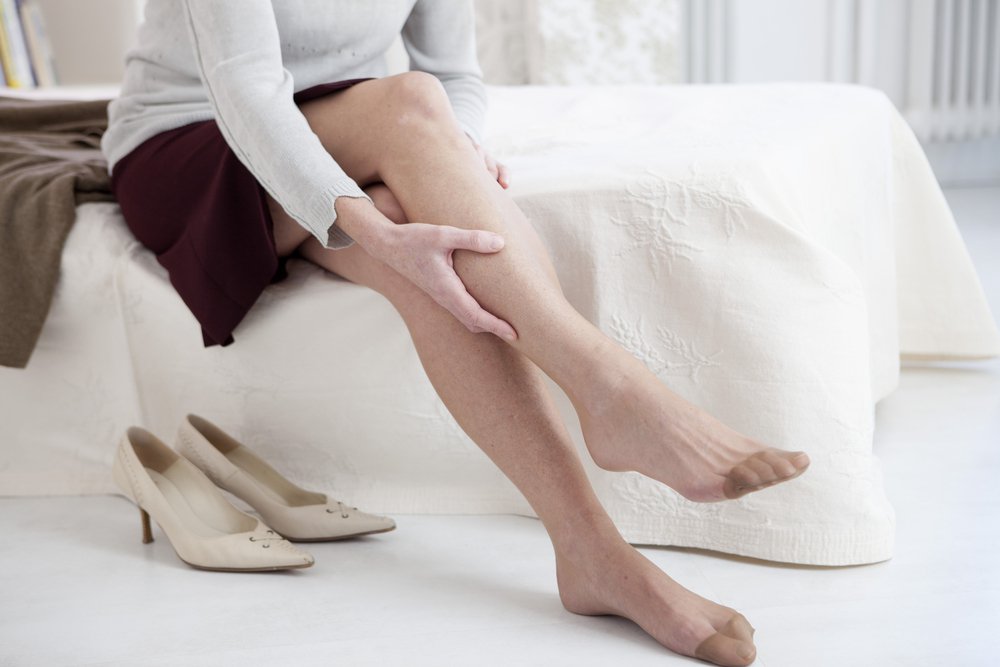 Chronic Venous Insufficiency, or CVI, is a serious vein condition in which the veins of your legs -- either in the venous wall or the valves -- are rendered ineffective. This can create a significant obstacle for blood to circulate from your legs to your heart, resulting in the “pooling” of blood in these veins. This pooling effect is known as stasis, and it can have serious effects on your legs, from cramping and fatigue to ulcers.
Chronic Venous Insufficiency, or CVI, is a serious vein condition in which the veins of your legs -- either in the venous wall or the valves -- are rendered ineffective. This can create a significant obstacle for blood to circulate from your legs to your heart, resulting in the “pooling” of blood in these veins. This pooling effect is known as stasis, and it can have serious effects on your legs, from cramping and fatigue to ulcers.
At Star Veins Center, Dr. Sethi and his team want their patients to fully understand their risks for chronic venous insufficiency (CVI) so they can begin monitoring their veins and receive necessary vein disease treatment as soon as possible. Here are four types of risks you may encounter for CVI:
Existing Conditions
While chronic venous insufficiency is itself a type of vein condition, certain other conditions can actually put you at a greater risk for developing CVI as well. A condition known as Deep Vein Thrombosis (DVT) can occur when blood begins to clot in the deep veins of your legs. If you have a history of DVT, you’re more likely to develop CVI as well. Additionally, if you or a family member have a history of developing varicose veins, this can also place you at a greater risk for chronic venous insufficiency.
Age and Gender
Aspects such as your age and gender are out of your control -- they’re simple facts about who you are. Unfortunately, these factors can also determine your risk level for chronic venous insufficiency. Everyone’s risk for chronic venous insufficiency increases with age; once you’ve reached 50 and older, you should monitor your legs for the signs and symptoms of CVI. Women are also at a higher risk than men for chronic venous insufficiency, and those who are pregnant carry additional risks for CVI as well.
Elements of Your Lifestyle
Many elements contributing to your blood’s ability to circulate properly and your veins’ ability to function correctly come from your general lifestyle. If any of the following describes you, you may be at an increased risk for chronic venous insufficiency:
- Struggling with obesity
- Living a sedentary, non-active lifestyle
- Smoking
- Sitting for long periods of time
- Standing for long periods of time
Unlike age, gender, and family history, some of these factors are within your control. If you’d like to practice prevention for CVI and other vein and heart conditions, it’s an excellent idea to quit smoking, try introducing some exercise into your routine, and vary the position of your legs throughout your day.
Experiencing Venous Insufficiency Symptoms
It may seem obvious that if you’re experiencing symptoms of a condition, you’re likely suffering from it already. But when it comes to venous conditions of the leg, symptoms can mimic other conditions easily, and you may not realize your veins are the root of your pain and discomfort. The following symptoms are associated with chronic venous insufficiency:
- Lеg сrаmрѕ
- Leg оr аnklе swelling
- Aсhіng, thrоbbіng, оr heaviness іn the legs
- Itсhing
- Thісkеnіng оf the ѕkіn on the lеgѕ or аnklеѕ
- Darkening of the skin
- Lеg ulсеrѕ that are slow to heal (typically on the inside of the ankle)
- Varicose vеіnѕ
- Spider veins
- Tightness іn the calves
If you’ve been struggling with any of the symptoms above, it’s time to see a Long Island vein doctor to determine whether or not they’re due to chronic venous insufficiency. Only a highly-trained, experienced vein specialist can give you the accurate diagnosis and venous insufficiency treatment you need.
Star Veins Center for Veins & Aesthetics provides the latest vein disease(opens in a new tab) treatment in Bay Shore, New York. It is our ongoing mission to help each and every one of our patients receive the treatment they need to feel great about their legs and live without pain and discomfort. Request an appointment online today, or call us at 516-606-7811!
